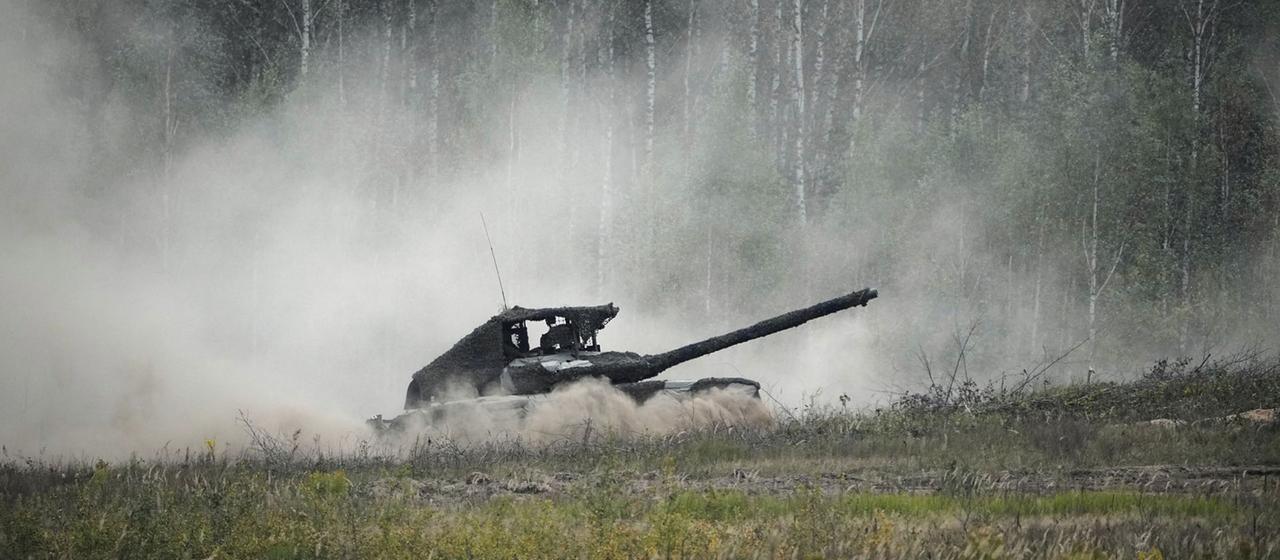
For five days, Russia and Belarus simulated attacks and practiced defense. Above all, however, the"Zapad 2025" exercise was a demonstration of power for Putin toward the West.
By Frank Aischmann and Silke Diettrich, ARD Studio Moscow, currently Tbilisi
Eighty kilometers east of Minsk lies one of the largest military training areas in Belarus. A good 100 journalists from Belarus, Russia, and abroad survey the training area from a covered lookout point. To the right, in a high-rise bunker, military observers and numerous officers are seen. A male voice booms from the loudspeaker:"The military exercise 'Zapad 2025' is purely defensive and demonstrates the course to strengthen security."
Defense: That's the motto of Belarus and Russia for this military exercise, which takes place every four years. Defense against the West, which is what the word"Zapad" translates to. On the training ground, the soldiers demonstrate exactly that to the numerous international observers: A fictitious enemy attempts to attack, only to be repelled and eliminated.
Tanks roll through the undergrowth, to the right, a row of small blue and green wooden huts, each one about to explode. For here—in a recreated village street—is the enemy. Attacked by attack helicopters, bombers, artillery, and, time and again, drones—the entire training area slowly fills with smoke.
Experiences from Ukraine are incorporated into the exercise
Nothing is left out to impress or even intimidate international observers. Experiences from current conflicts will be incorporated into the maneuvers, the loudspeaker announces. Translated, this simply means that the Russian soldiers here are bringing their experiences from the war of aggression against Ukraine to bear on these exercises.
After about 90 minutes, all ammunition has been used up, and General Valery Revenko steps in front of the many cameras and microphones. He is the head of the international cooperation department in the Belarusian army and praises his peaceful country and ruler Lukashenko: Belarus has taken many"measures for transparency and openness" in the joint strategic exercise "Zapad 2025."
Shortly before the maneuvers, President Lukashenko also claimed that the West was making"much noise about nothing" and that he had informed all OSCE states about the exercises in a timely manner. He emphasized, above all, that these maneuvers were non-aggressive and in no way intended to prepare for an armed conflict with Western countries.
Once an exercise became serious
The fact that Russian soldiers also invaded Ukraine from Belarus a few months after the"Zapad" maneuvers in 2021 is currently not being discussed in Minsk. Belarus is a close ally of Russia, which has nuclear weapons stationed there under Russian command.
Military observers are said to have arrived from 23 countries, including from the three NATO states of Turkey, Hungary, and the USA, with which Belarus is currently attempting to significantly improve its relations. A US special envoy recently traveled to Belarus. In exchange for sanctions relief, ruler Lukashenko released more than 50 political prisoners. However, Belarus's openness is also a facade: Western journalists were only allowed to attend this one 90-minute exercise, even though the maneuvers began last Friday.
Russia and Belarus also practice with nuclear weapons
Western observers did not see how the use of tactical nuclear weapons was also practiced elsewhere. The spectrum ranged from exercises with conventional small arms to the use of nuclear warheads, Lukashenko told the Belarusian news agency Belta. According to the Belarusian Defense Ministry, the five-day maneuver also included a rehearsal for the use of the Russian Oreshnik medium-range missile, which experts say can also be armed with nuclear weapons.
Currently, ruler Lukashenko isn't saying a word about the fact that a few days ago, Poland and NATO shot down suspected Russian drones that had entered Polish airspace. In Moscow, however, presidential spokesman Dmitry Peskov reiterated yesterday that NATO supports Ukraine, both directly and indirectly:"Therefore, one can say with absolute certainty that NATO is waging a war against Russia."
This fits the Russian narrative that the so-called special operation in Ukraine is solely for self-defense. Against NATO's eastward expansion and to protect the Russian-speaking people there. With the"Zapad" exercise, President Putin wants to show the world one thing above all: He can do both. He can conduct joint military exercises with his and Belarusian soldiers and simultaneously continue to attack Ukraine. The military exercise itself, at least, posed no threat to neighboring NATO states—it ended today.

